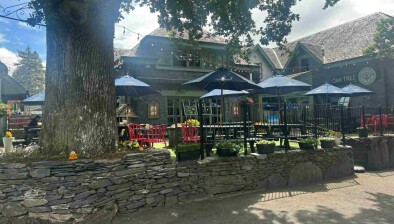New Japanese Knotweed Code of Practice published
 The Invasive Non-native Specialists Association (INNSA), the UK trade body dedicated to the UK Invasive species industry, has launched of a new Code of Practice for managing Japanese Knotweed.
The Invasive Non-native Specialists Association (INNSA), the UK trade body dedicated to the UK Invasive species industry, has launched of a new Code of Practice for managing Japanese Knotweed.
The new Code of Practice replaces the third edition of the Environment Agency document “Managing Japanese Knotweed on development sites” also known as “the knotweed code of practice”, which was withdrawn in 2016 and passed to INNSA for on-going management and updates.
Claimed to be the most downloaded document in the history of the Environment Agency, the new Code of Practice represents the highest shared standards of best practice within the industry; written, enhanced and refined by the Association’s senior representatives.
The code provides a clear understanding of what is required and recommended when dealing with Japanese Knotweed remediation works.
INNSA is a not-for-profit industry body for companies involved in controlling and eradicating invasive non-native species in the UK.
The body aims to improve standards within the industry through providing advice, services and support to its members and influencing the EU and UK policy agenda and guidance on non-native invasive species.
James Sherwood-Rogers, chairman of INNSA, said: “Expected to be a go-to document for all developers, planners and contractors who may encounter Japanese Knotweed in the course of their work, the new Code of Practice will provide a clear understanding of what is required and recommended when managing infested land in an appropriate way.”
The invasive and resilient nature of Japanese knotweed means that it has the capacity to cause extensive damage to properties, road verges, rail infrastructure, flood defences, retaining walls and external works.
With it now incumbent on any property valuation surveyor to identify and report any Japanese knotweed on the inspected or adjacent properties, the possibility of claims being made is increasing.
This potential for claims was brought in to sharp focus during a landmark court case earlier this year in South Wales. Network Rail was forced to pay compensation to residents after they claimed the encroachment of Japanese knotweed from the Government body’s adjacent land had damaged their homes and in turn reduced their value.
James Sherwood-Rogers added: “Japanese Knotweed presents continual challenges for all segments of the development ecosystem; including local authorities, planners, architects, developers, contractors, consultants and housing providers.
“Any organisation concerned about Japanese Knotweed would be well advised to consult the new Code of Practice as a starting point, before seeking expert advice to ensure that any treatments are both thorough and effective in the long term.”
More information about INNSA’s ‘Code of Practice – Managing Japanese Knotweed’ and how to obtain a copy can be found at www.innsa.org.
















